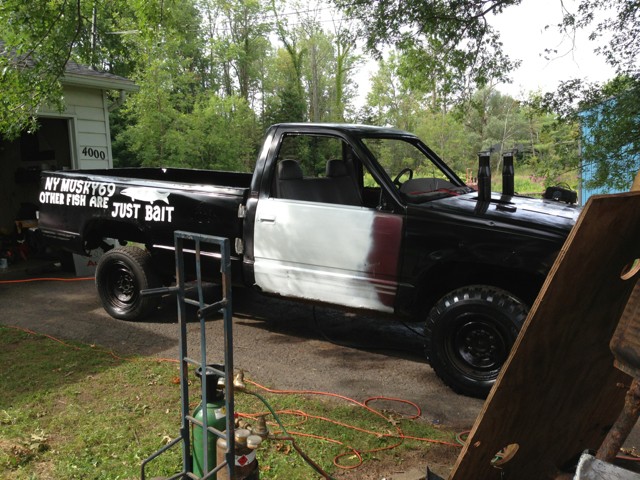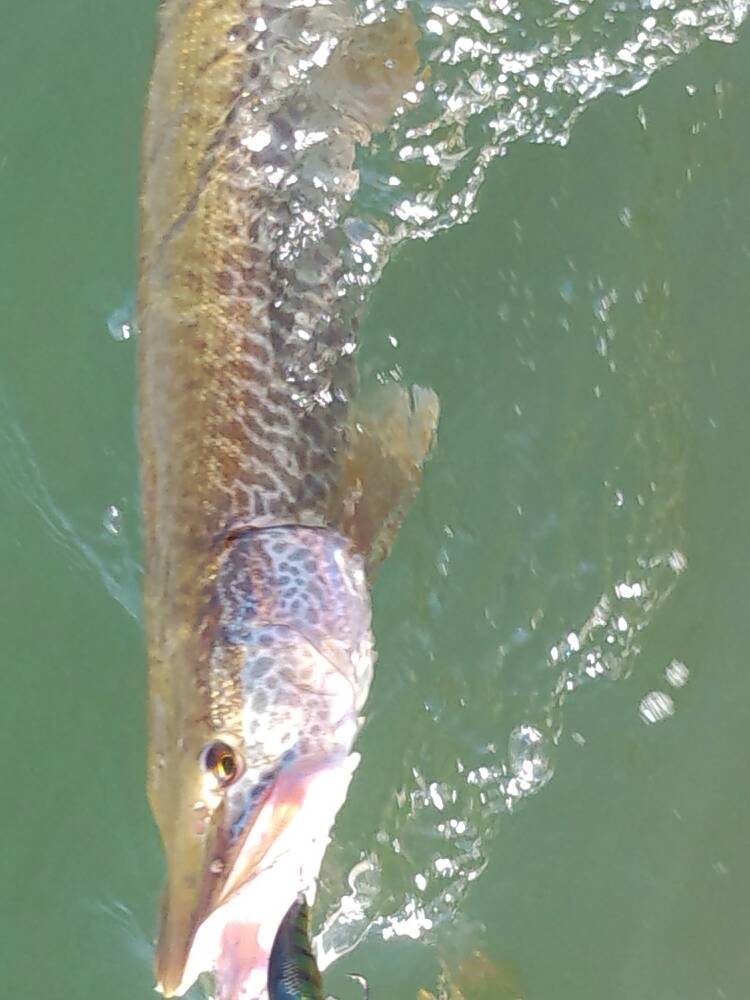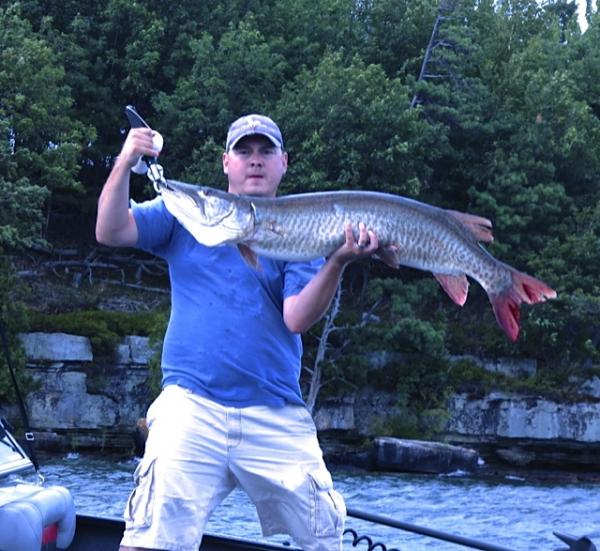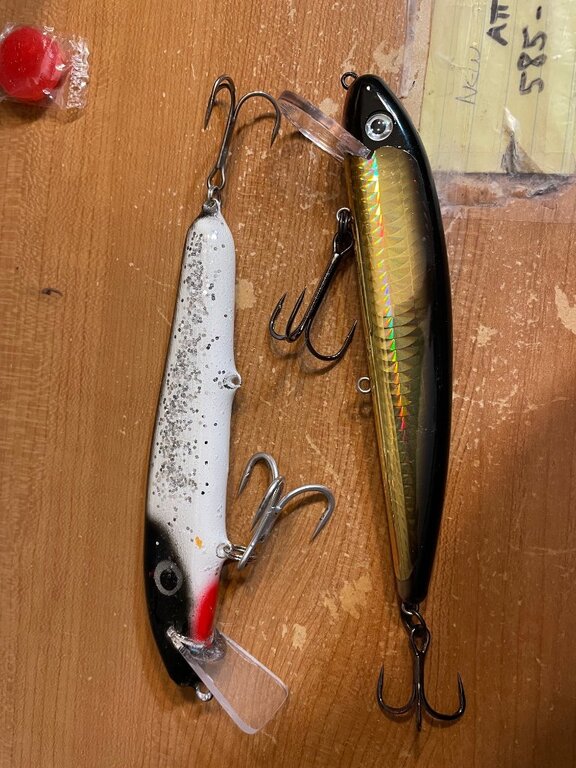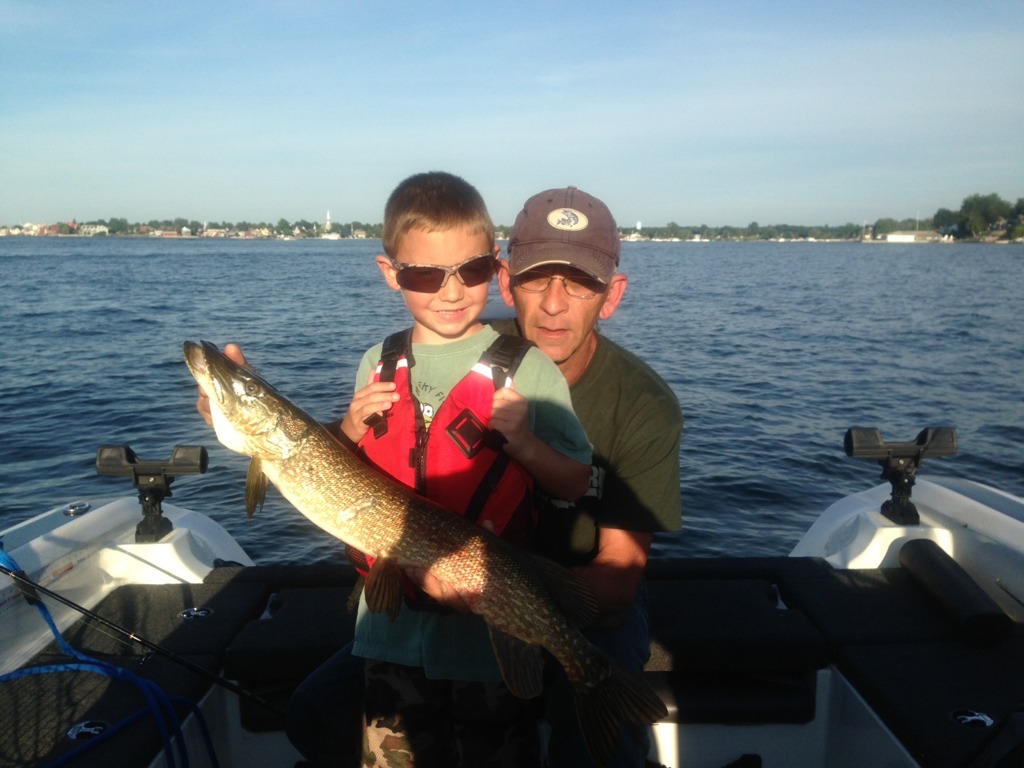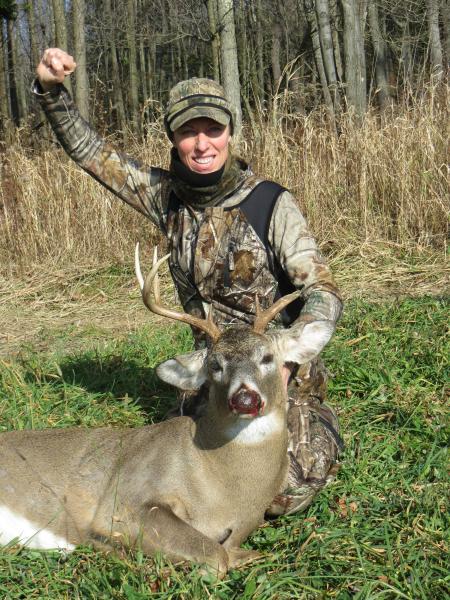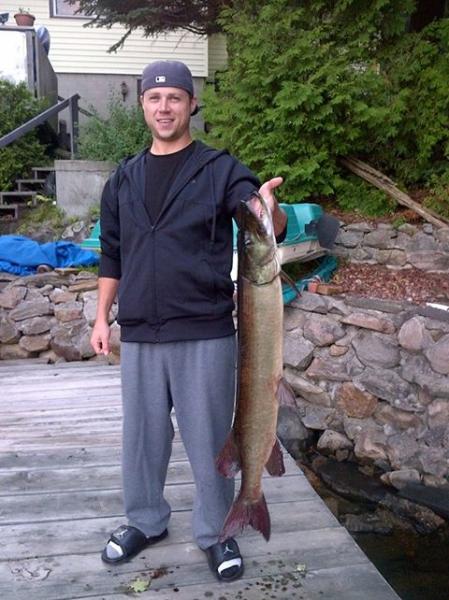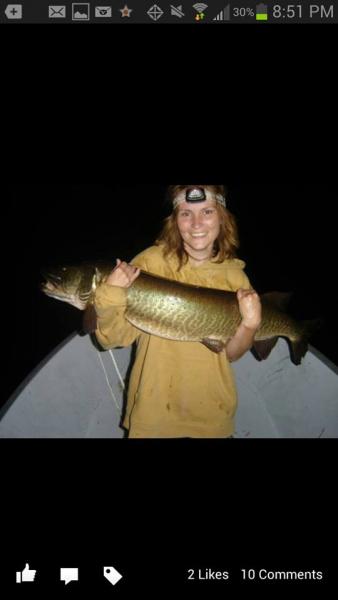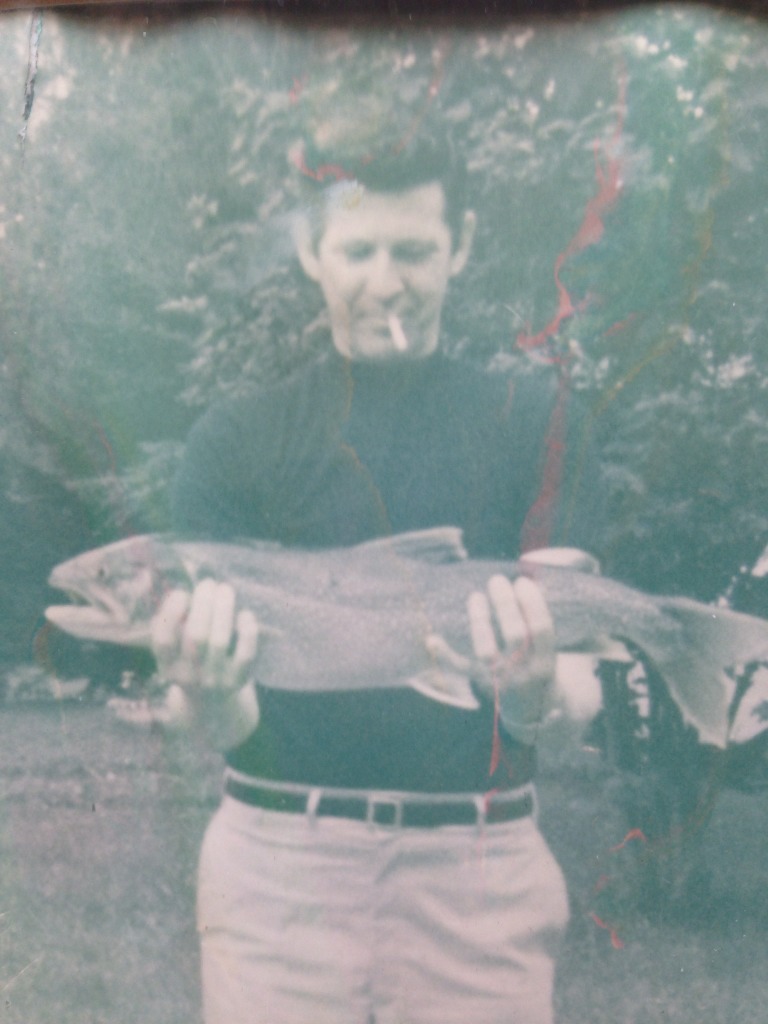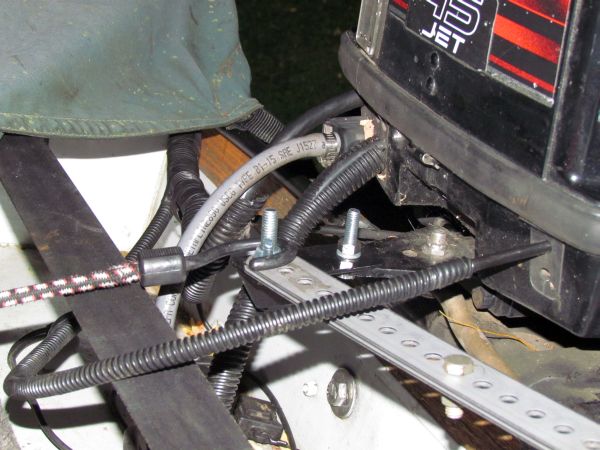-
Posts
1,074 -
Joined
-
Last visited
Content Type
Profiles
Forums
Events
Gallery
Store
Everything posted by muskiedreams
-
If you live in Tyrone, you must be famillir with Waneta lake. There is a healthy population of muskies there. Eddie Cragg of Reel Rippin' Charters lives out that way and charters for muskies on that lake. I belong to both The Niagara Musky Association and NY Muskies Inc. Chapter 69. There are members in both organizations that can give you advice on fishing Waneta. It is a little different than the big waters of the Niagara and the tactics are a little different. Since it is a small lake it is a good place to get started.
-

Crossing into Canadian waters
muskiedreams replied to Up-trim's topic in Musky, Tiger Musky & Pike (ESOX)
They should be partnering with recreational boaters and anglers to be their eyes to report suspicious activities. Instead they are alienating those who are no threat to security. US Homeland Security is talking about instituting new border regulations that will complicate things even further. I wonder if citizens and local, county and state governments will even have a say in what they decide to do. I would like to think so but it seems we are loosing our voice and rights all the time. -
It is at Darian Lakes State Park at Shelter 1. Brad said in an email that the picnic is at 3PM. I'm not sure if that means we will be eating at that time or what but I am going wit Mark and his wife and I think we will be there at least an hour or two earlier. Below is a link to the park's website. Their map has a lot to be desired. The shelters are not shown on the map. It looks like there are only roads near the lake (pond) and the campsites. The rest is just trails. http://nysparks.com/parks/144/details.aspx Here is a map to the location. It looks like you have to enter on Harlow road. Take 77 south from the Pembrook exit of the Thruway. Go past Reynolds Rd. and take a right on Summer Rd., Then take a left on Harlow Rd. The entrance will be on Your left. http://mapq.st/16WVVAm Steve
-
-

Otisco 8-15 nice tiger
muskiedreams replied to justtracytrolling's topic in Musky, Tiger Musky & Pike (ESOX)
-

Crossing into Canadian waters
muskiedreams replied to Up-trim's topic in Musky, Tiger Musky & Pike (ESOX)
Passport is not needed at this time. Also you don't have to check back in with US Customs if you did not land (or anchor) or connect with another boat in Canadin waters. The US border patrol is currently considering requiring vessels to check in at a video phone (which may not be conveniently located) when returning from Canadian waters. Supposedly having a Nexus card ($50 and good for 5 years) will allow you to call in. I don't think it will come up for discussion like state fishing and hunting regulations. It may be totally up to the discression of Homeland Security. So it may become more expensive and inconvenient to fish in Canadian waters. You will need: 1)Canadian outdoor card 2) Canadian fishing lisense 3)Nexus card (unless there is a convenientty located video phone which still might not be very convenient) You will have to go through the motions of getting these things. Then you will have to report when you enter Canadian waters and report back into US when returning. Everyone on the boat will have to have these things. It may not be worth the expense and agrivation unless you intend to fish Canadian waters on a regular basis. -

Crossing into Canadian waters
muskiedreams replied to Up-trim's topic in Musky, Tiger Musky & Pike (ESOX)
1-888-CAN-PASS. Call this # just before or as you enter Canadian waters. They will ask you a bunch of border type questions, including your boat #, passenger names and B dates, weather you have alcohol (illegal in Canada) firearns, weapons, etc. They will give you a confirmation # you will need if you are stopped by Canadian authorities. If you go over another day, it will go a little faster because they will already have your information from before. If you are just traveling through Canadian waters, without stopping, to get to another location in US waters you don't have to call in. -
There are some guys who do well in the Nagara on them. Edges where it drops to 15 to 20 ft and drifting in areas with humps where depth changes from 12 to 20 or 25 ft that have a steady current (say 1.5 to 2.5 mph) will produce fish there. They generally vertical jig with quick lift and slow drop. The fish almost always hit on the drop, so if you suddenly don't feel the bait, set the hook. Sometimes they use the trolling motor to slow th drift. They told me they also have had a lot of success with one angler casting cranks to lure them toward the boat, then the fish will hit on the other angler's Bondy below the boat. They will also attach a large saltwater frog hook or trebble hook to the line tie to increase hook up percentage. Red October Baits tubes can be used in the same areas but drift and jig upstream from the boat. Steve
-
-
Hello Bob, It is generally most productive to use smaller musky baits 4 to 6 inches but baits up to 10 inches can also produce fish. Shad type crank baits with 3 to 15 foot depth ranges, jerk baits, glide baits, bucktails and plastics such as bulldogs and tubes have all produced fish there. Perch is probably the most productive color patern (especially with gold in it) but other natural colors, burnt orange, fire tiger, red/white, black/white and chartreuce can all produce fish. Steady retrieve can work but irregular retrieve and stop and go is usually more productive. The north and south ends in 6 to 12 ft. of water and shoreline breaks (especially around points and irregularities) generally hold fish that time of year. I am not sure where you live, but I am a member of Muskies Inc. Chapter 69 which we started a little over a year ago. http://www.nymusky.com/# We meet on the third monday of every month at the Moose Lodge on West Henrietta Rd. at 7 PM. Also, this Sunday August, 18 we are having a picnic at Darian Lake State Park. You are welcome to join us. Several of our members are regulars at Waneta. Our President, Jim Reynolds hosts a tournament on Waneta on the first Saturday of October. Last year we had a great turnout and a reel good time. There were 41 anglers and 19 muskies were caught. The first and second place fish were caught less than 15 min. before the end of the tournament. We have a cookout and party after the tournament at a cottage we rent for the weekend. One last thing Bob, please read the topic on catch and release that is pinned to the top of this forum and try to be as prepared as possible for a safe catch and release for the fish and for you. We must all do our part in protecting our valuable resources. Good luck!! Steve
-

St. Larry report 8/8-8/11
muskiedreams replied to JOE ESOX's topic in Musky, Tiger Musky & Pike (ESOX)
-

Muskies Inc. Newest and Youngest Member
muskiedreams replied to BlueEye's topic in Musky, Tiger Musky & Pike (ESOX)
Congratulations Chad!! She's very cute. Definately a keeper. -

July 20th Musky Tourney on Waneta Lake
muskiedreams replied to NitroMusky's topic in Musky, Tiger Musky & Pike (ESOX)
-

July 20th Musky Tourney on Waneta Lake
muskiedreams replied to NitroMusky's topic in Musky, Tiger Musky & Pike (ESOX)
-
I'm glad you all appreciate this post. I just thought it would be an important topic to cover on this forum. Thank you Chad, for pinning it to the top. Justin. I understand what your are up against with catch and release from a pontoon boat. I admire you persistancty to do the best you can considering the circumstances. With a good net, you should be able to do better. You can always hold the fish in the net for a few minuets to give it (and yourself) a little breathing time if it has been overly stressed.
-
I realize that many of you are aware of catch and release procedures and their importance but I thought I would start this thread for the benefit of those who are new to musky fishing or are thinking about trying it. Without musky catch and release practices that are commonly practiced today, considering that fishing pressure has increased on many bodies of water, partially due to the internet, we would not have the musky fisheries we have today. Just because a body of water is stocked with muskies or tiger muskies, doesn't mean that catch and release is less important. Since they take many years to become trophy size and with the increased pressure, we need to be as diligent as we can about releasing them to fight another day and spread the word about this subject if we want the prospect of catching trophy fish in the future. Good catch and and release practices have been proven to be significant in maintaining a quality musky fishery including all of the following. 1. Using more than adequate rod, reel, line and leader and keeping them all in top condition in order to keep the fight short and to minimize the possibility of the line breaking and the fish swimming off with a lure in it's mouth. 2. Have all the release tools you may need to release the fish with minimal trauma. Large coated net: this is your boatside live well for the release process. Jaw spreaders: sometimes they are needed Quality hook cutter: Knipex is the best Heavy duty long nose pliars: best for hook removal. the longer, the better. Available at any hardware store. Keep the fish in the net at boatside and keep its head below the surface as much as possible while removing the hooks. You can attach wrist straps to the tools to keep from dropping them in the water. Be careful to avoid being impaled by a hook if the fish starts to thrash. Especially with multiple treble hooks. Always be ready to get your hands out of the way. It is no fun if you and the fish are hooked to the same lure. This is one of the reasons to have a good set of hook cutters. The other is if there are multiple hook points embedded in the fish, it is easier to cut the hooks and then remove the pieces from the fish. Have some replacement hooks handy to replace them. Use jaw spreaders when needed to aid in gaining access to remove or cut the hooks. If the fish has been overly stressed, you might want to consider releasing it without removing it from the water. If this is the case and you still want to get a picture and/or measurement, letting it rest for a few minutes and moving some water through it's gills first would be a good idea. It can be a judgement call though, under these circumstances. 3. If you want to get a measurement and take a picture, it should be done as quickly as possible to minimize the amount of time the fish is out of the water. The girth can be measured in the water with a flexible measuring tape made for tailoring. If you only want an approximate length measurement, a floating measuring stick can be used. To get an accurate measurement with minimal trauma to the fish, a bump board is best. There are many commercially available ones and you can easilly make your own. It is best to have one where the length markings show up well in a picture. Wet the board before you put the fish on it to keep slime loss to a minimum. It takes planning and practice but you should be able to measure on the board and take a picture or two in 20 sec. or less. Before you remove the fish from the water, have the camera ready and position the boat with the sun position in mind for best picture. Remove the fish from the net with one hand holding the gill plate (being careful not to damage the gills) and support the body of the fish horizontally with your other hand. Never hold the fish vertically by the gill. That can damage the gills or rip the jaw. Get in position and have your partner snap a picture or two. If you want to get an accurate measurement, position the fish squarely on the board to make the measurement and snap a picture if desired. Never lay the fish on a carpeted floor or any similar type of surface as it will remove the protective slime from the skin. 4.Now it is time to get the fish back into the water. Support the fish in the same mannor as above and and carefully lower it into the water. Hold onto the tail and slowly work the fish forward and back to get water flowing through the the gills. Another(and probably better) way is to face the fish ino the current (if you are in current) or get the boat moving very slowly forward. Ideally you want to feel the fish kick its tail to let you know it is ready to go. Be patient.it may take some time, depending on how stressed the fish is. Please do the best you can and try not to let it go until you are sure it can swim away strongly. If you are not able to revive the fish, it happens sometimes but if you have done your best, the only thing you can do is think about what you can do the next time to keep it from happening again. Always check the condition of the last several feet of your line and leader after catching or loosing a fish. Replace the leader or cut and re-tie the line if either are even slightly questionable. I have heard of several cases where a tagged fish or a fish with a distinctive marking from an old wound was caught again by one or two other anglers. Very often it is still in the same neighborhood. Even a year or two later. So practicing good catch and release techniqies really does provide angling pleasure for others in the future. I would like to encourage others to post any information, pictures, videos, questions, experiences, etc. pertaining to this subject.
-
These days there is no real need to keep a fish for a mount. As long as you get a good picture, length measurement and girth measurement you can get a very good replica made that will be every bit as good as the real thing. Also it will last longer. Too me though, the memory of the experience and the picture (or better yet, video) are the most important.
-
Here are some measuring devices commonly used by musky anglers. This board would not let me post the images from google image search so go to the links for examples. This is a 60 in tubular floating measuring stick. It has inch markings gong in both directions so you don't have to worry about which end is which. They are available at many catalog tackle outlets. Good for in water measurement but not always accurate. You can use it on a flat surface but should be careful not to lay the fish on a surface such as a carpeted floor which will remove the fish's protective slime. Here is one example of what is referred to as a bump board. You have to remove the fish from the water but it is considered to be the most accurate type of device to measure length with as long as the nose of the fish is at the stop and the fish is straight and flat on the board. Very often in catch and release tournaments, a clear photo or video on the board is required for proof of size so it is best to have one with a ruler that is easilly visible in a photo. It is best to wet it down to minimze how much slime gets rubbed off the fish. It is typically accecptable to squeeze the tail to get a maximum indication. They are commercially available or many anglers make their own. You can use a tailor's measuring tape to measure girth. You can get them anywhere you find sewing supplies.
-
Larry, Looking at the proposed changes as written, there is nothing that indicates that the musky season will remain the same on the great lakes. Even in the great lakes section there is an item titled "Minimum size limit and season dates for muskellunge in Niagara River, Lake Ontario & St. Lawrence River (2014_GL_01)" but the following text does not mention anything about season dates. Do you think that was just an oversight? I bet members of the NMA an the charter captains on the St. Lawrence will be contacting them about that.
-

Somewhere in near north Ontario yesterday 6/30/13
muskiedreams replied to waller's topic in Musky, Tiger Musky & Pike (ESOX)
-
-


